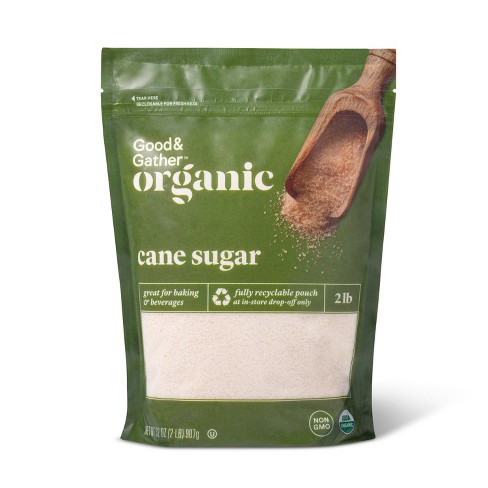Comprehending Cane Sugar Processing: A Comprehensive Review of the Stages
Comprehending Cane Sugar Processing: A Comprehensive Review of the Stages
Blog Article
An Extensive Overview to the Environmental Influence and Sustainability Practices in Cane Sugar Handling
The environmental influence of walking cane sugar handling offers a complex array of challenges that warrant careful evaluation. From soil degradation and excessive water usage to the carbon footprint associated with growing and manufacturing, the effects of standard methods are far-ranging. What details techniques can be applied to strike an equilibrium between productivity and environmental stewardship?
Review of Walking Cane Sugar Handling
Walking stick sugar processing includes a collection of organized actions that change sugarcane into refined sugar. At first, harvested sugarcane is carried to processing centers, where it goes through cleaning up to remove dirt and debris. Following this, the walking cane is squashed to extract juice, which is then cleared up by getting rid of impurities with heating and the enhancement of lime.
The clarified juice undertakes evaporation, where water is removed to focus the sugar content. This focused syrup is then taken shape through air conditioning, enabling sugar crystals to form. These crystals are divided from the remaining syrup utilizing centrifugation, resulting in raw sugar. To accomplish polished sugar, the raw product undertakes additional filtration processes, which may consist of filtering and washing to get rid of remaining pollutants and shade.
The final item is after that dried and packaged for distribution. Throughout this whole procedure, preserving performance and quality control is vital to make certain the sugar meets industry requirements. Each action in cane sugar processing not only adds to the end product but also has ramifications for source usage and waste generation, establishing the stage for discussions on sustainability and environmental effects related to sugar manufacturing.
Ecological Challenges of Production
The manufacturing of cane sugar presents several considerable environmental difficulties that warrant interest. One main problem is the extensive use of agrochemicals, including fertilizers and pesticides, which can bring about dirt destruction, biodiversity loss, and contamination of local water sources. The runoff from sugarcane fields commonly lugs these chemicals right into close-by ecosystems, disrupting aquatic life and impacting the wellness of communities reliant on these water bodies.
One more difficulty is the high power consumption related to sugarcane handling. The boiling and refining stages need substantial warm, mainly created by shedding fossil gas, adding to greenhouse gas discharges. Furthermore, the expansive acreage required for sugarcane cultivation can bring about logging and habitat damage, more exacerbating environment modification and harmful wild animals.
Furthermore, the labor practices in some areas increase ethical problems, as workers might deal with inadequate working problems and inadequate salaries. This situation frequently bolsters a cycle of hardship in neighborhood neighborhoods. Cane Sugar Processing. Addressing these environmental obstacles is important for creating a lot more lasting methods in walking cane sugar production, inevitably benefiting both the atmosphere and the areas involved in this sector
Water and Land Use Effect
Water sources and land utilization are important components in the walking stick sugar sector that substantially influence the atmosphere. The farming of sugarcane calls for substantial water input, with quotes recommending that it can consume as much as 2,000 litres of water per kilo of sugar generated. This extensive use of water often brings about deficiency of neighborhood water resources, influencing not just the sugarcane ranches yet also bordering environments and areas that count on the very same water sources for agriculture and domestic use.

Moreover, land use for sugarcane cultivation can lead to deforestation and the conversion of natural habitats into monoculture plantations. This practice decreases biodiversity, disrupts neighborhood ecological communities, and contributes to soil deterioration. The growth of sugarcane fields typically intrudes on useful agricultural land, creating competition for sources in between food and biofuel manufacturing.
Sustainable practices, such as optimizing watering strategies and carrying out crop turning, are essential to mitigate these influences. By embracing much more efficient water use and land monitoring methods, the walking stick sugar industry can minimize its environmental footprint, making certain an equilibrium between farming efficiency and environmental conservation.
Greenhouse Gas Emissions
Greenhouse gas discharges stand for a significant environmental problem within the walking stick sugar handling market, particularly as farming practices increase to satisfy international demand. The farming of sugarcane, a crop that prospers in tropical environments, relies greatly on synthetic plant foods and pesticides, which add to laughing gas emissions. In addition, land-use changes, consisting of deforestation for new sugarcane haciendas, launch co2 stored in plants and dirt.
During processing, energy usage is one more significant resource of greenhouse gas exhausts - Cane Sugar Processing. Several sugar mills make use of fossil fuels to power machinery and generate heat, resulting in considerable carbon footprints. Furthermore, the transportation of raw sugarcane and finished products includes layers of exhausts via gas burning in automobiles
The collective impact of these discharges intensifies climate change, posing risks not just to the atmosphere however likewise to the long-term viability of the sector. Stakeholders have to identify the urgent need for comprehensive approaches that resolve these discharges. This involves evaluating present agricultural practices, refining techniques, and transportation systems to recognize areas for improvement and reduction. Attending to greenhouse gas emissions is essential for cultivating a much more sustainable walking cane sugar market in a changing environment.

Sustainable Practices and Innovations
Sustainable practices and developments are significantly essential in the walking stick sugar handling market as stakeholders look for to reduce ecological influences while preserving productivity. One considerable development is the execution of integrated crop administration, which maximizes source usage by combining dirt monitoring, pest control, and crop rotation strategies. This strategy enhances yield while lessening chemical inputs and maintaining soil health and wellness.
Moreover, the adoption of renewable resource resources, such as biomass from sugarcane deposits, has actually gained traction - Cane Sugar Processing. By converting browse around this web-site waste products into energy, processing facilities can reduce their reliance on fossil fuels, consequently decreasing greenhouse gas exhausts
Water monitoring practices have also seen improvements through the recycling and reusing of water in processing plants, substantially minimizing freshwater usage. Advancements in modern technology, such as precision farming, allow farmers to keep an eye on plant health and wellness and resource usage much more efficiently, guaranteeing sustainable growing methods.
Additionally, certification programs like Fair Trade and Rain forest Partnership motivate environmentally responsible farming techniques and advertise social equity within read more the supply chain. By accepting these sustainable techniques and technologies, the walking cane sugar handling industry can enhance its strength and contribute positively to ecological stewardship.
Final Thought
The environmental influence of walking stick sugar processing offers considerable challenges, including dirt degradation, high water intake, and greenhouse gas discharges, alongside moral issues associated with labor techniques. Dealing with these issues with sustainable methods, such as integrated crop management, sustainable energy fostering, and water recycling, is important. By advertising socially fair and environmentally accountable methods in sugar manufacturing, the industry can alleviate its adverse impacts, ensuring a much more lasting future for both environments and areas involved in this field.
Cane sugar processing entails a collection of systematic steps that change sugarcane right into polished sugar. Each step in walking stick sugar handling not just adds to the last product however additionally has effects for resource use and waste generation, setting the stage for discussions on sustainability and ecological influences linked with sugar manufacturing.
Greenhouse gas emissions represent a considerable ecological worry within the cane sugar processing sector, especially as farming techniques expand to meet global demand.Lasting practices and developments are progressively essential in the walking cane sugar handling sector as stakeholders look for to minimize ecological effects while preserving efficiency.The environmental impact of cane sugar a knockout post processing offers substantial obstacles, consisting of soil deterioration, high water consumption, and greenhouse gas emissions, along with moral problems associated to labor methods.
Report this page